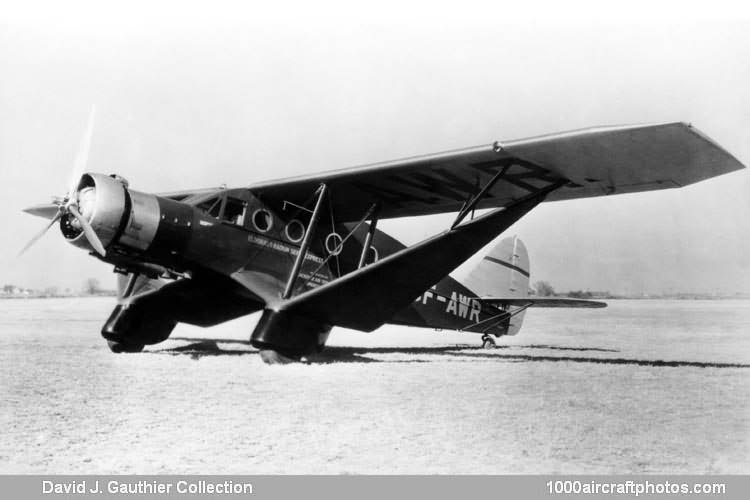03/31/2013. Remarks by Johan Visschedijk: "The Aircruiser, which was certificated on March 16, 1935, has been described as "just an old Airbus with a little more guts and a lot more muscle". Just how much muscle is indicated by the contribution to overall lifting area made by the lower stub wings and airfoil-shaped outer lifting struts: 198.5 sq.ft (18.44 sq.m), to add to the 465.7 sq.ft (43.26 sq.m) of the main wing. The resulting total of 664.2 sq.ft (61.71 sq.m) explains the first element in the designations applied to Bellanca aeroplanes at this time.
The second element indicated engine power: thus the Aircruiser was offered in 66-67, 66-70, 66-75, 66-76, and 66-85 form, with Cyclone or Hornet engines of 670, 715, 730, 760 and 850 hp respectively. This extra "guts and muscle" was best demonstrated by the all-cargo version of the Aircruiser 66-70, which had an empty weight of 5,731 lb (2,600 kg) yet could lift a useful load of 6,100 lb (2,767 kg), including 150 gal (568 l) of fuel.
Ironically, the Aircruiser's very ability was its undoing, for single-engined transports of such size and weight were virtually excluded on safety grounds from US airline operation. Bellanca had always believed that the use of one good, reliable engine was preferable to the additional problems and cost of a multi-engine installation. But no exceptions could be made, and the handful of Aircruisers built all went to delighted owners in Canada, where some were still in operation thirty years later as living proof of their efficiency and reliability.
The Bellanca Aircraft Corporation of New Castle, Delaware, USA, built the pictured aircraft in 1935, and on March 14, 1935 it was registered to the Mackenzie Air Service Ltd. of Edmonton, Alberta, Canada. Nicknamed "The Big Bellanca" or "The Flying W" (referring to the wing shape), it was operated for the Eldorado Gold Mines Ltd., serving the mine at Port Radium, Northwest Territories.
CF-AWR was sold to Canadian Airways Ltd. of Winnipeg, Manitoba, in August 1939, but was still operated for Eldorado, till the mine was closed in 1940. It became part of the Canadian Pacific Airlines (CPAL) aircraft fleet in 1942 when Canadian Airways merged into the newly formed CPAL. The aircraft was lost when it crashed, due to fuel starvation, near Upturned Root Lake, about 130 mls (209 km) northeast of Sioux Lookout, Ontario.
In 1973, the remains were recovered by the Western Canada Aviation Museum of Winnipeg, Quebec, where the aircraft is under long-term restoration since 1990."
